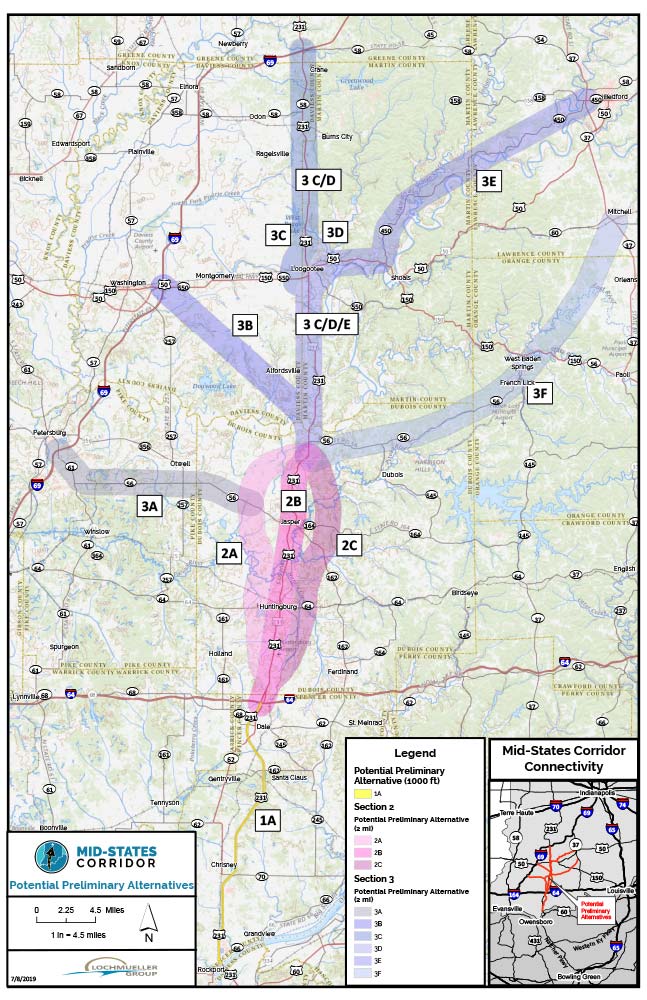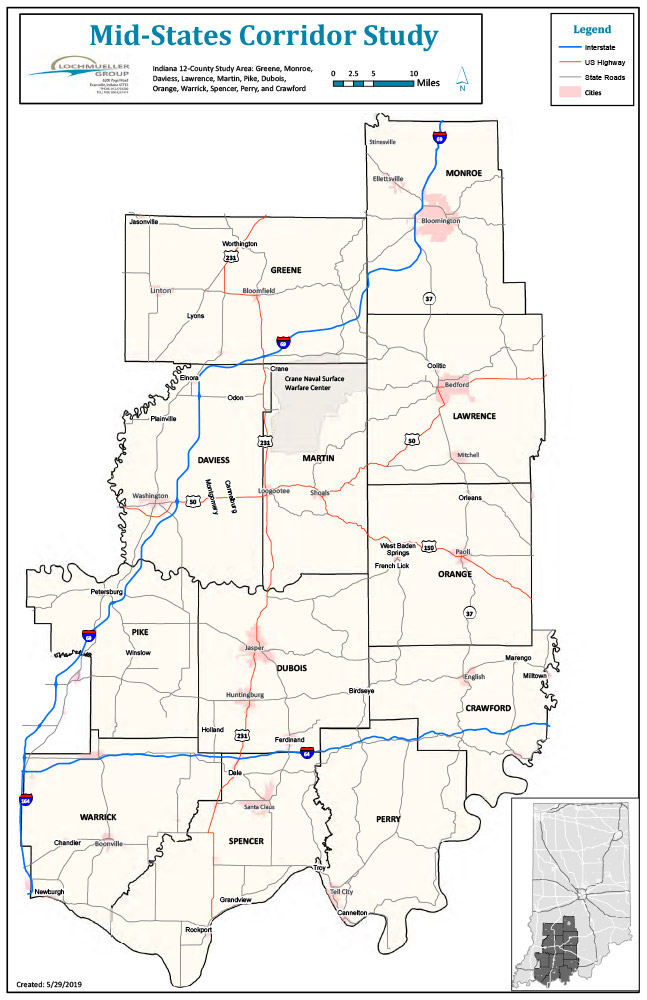
(UNDATED) – Officials say there are no planning delays expected for the Mid-State Corridor Project.
According to Mid-State Corridor spokesperson Mindy Peterson, the corridor is a proposed four-lane limited-access highway that would run north from Owensboro, Ky., through Rockport to Jasper then connecting to Interstate 69. There are currently five routes being considered. A route is set to be picked this fall.
A coalition of local businesses and community and environmental groups last week wrote a letter to state officials calling for the state to suspend all planning for the proposed highway, arguing that time and resources would be better spent helping Hoosiers deal with and recover from the medical and economic fallout from the COVID-19 pandemic.
The coalition includes more than 50 businesses in Orange County and several local and statewide environmental groups. Among them are Orangeville Rise, Hoosier Environmental Council, Indiana Forest Alliance, Sierra Club Hoosier Chapter, Valley Watch and Protect Our Woods, with technical support by the Environmental Law & Policy Center.
The coalition particularly objects to proposed routes that would bulldoze through the Hoosier National Forest, Martin State Forest and the unique karst terrain in the Lost River watershed. They also say continued work toward building the highway would multiply hardships for residents along the proposed routes who are already concerned about their own livelihoods and the future of their farms and businesses amid the pandemic.
However, Peterson says, the Project Team utilized a “Best in the Geographic Family” approach during the preliminary alternative screening to satisfy the NEPA requirement for evaluating a reasonable range of alternatives during the detailed assessment phase of the study.

“This included advancing alternatives in the vicinity of the forests for further evaluation. For those carried forward, the Project Team is working to avoid as many impacts as possible,” she added. “It’s important to note that six of the ten alternatives moving forward for additional study (B2, C1, C2, P1, P2, and P3) have no potential to impact the Hoosier National Forest (HNF). Four alternatives (M1, M2, M3, and O2) pass through the “acquisition boundary” of the Hoosier National Forest. The acquisition boundary represents land which the Hoosier National Forest might acquire if funding is available and the land was available for purchase. It is not clear at this stage of the study whether any property owned by the HNF would be impacted by any of these four alternatives.
All alternatives will be evaluated based on impacts, costs, and performance. Public feedback is always welcomed and there will be a formal comment period when the DEIS is published. That’s expected late this fall.




